#Gamification Strategies in Education
Explore tagged Tumblr posts
Text
0 notes
Text
Immersive Edutainment: Exploring the World of E-Learning with Captivate, Unity, VR, and Mozilla Hub. Game-Based Learning and Buddhism, Obviously.
In the fast-evolving world of education, the integration of technology has revolutionized the way we learn and engage with content. As an eLearning instructor, I recently had an exhilarating experience producing and developing an interactive module that blended game-based learning, virtual reality (VR), and Mozilla Hubs to create captivating edutainment content. Join me on this exciting journey…
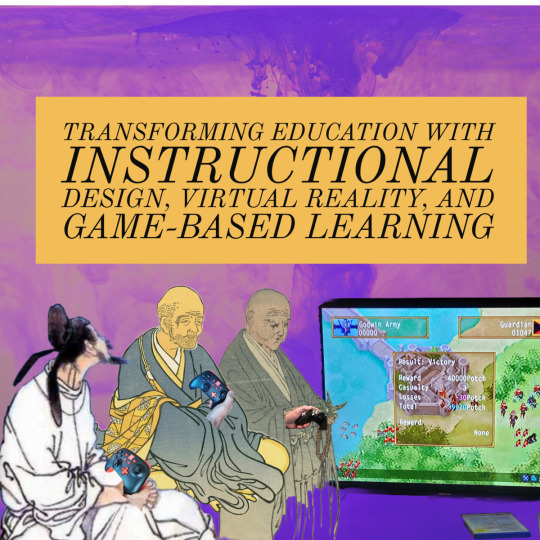
View On WordPress
#Captivate eLearning#Digital Game Narratives#Digital Learning#E-Learning Solutions#EdTech Innovations#Educational Gamification#educational technology#Engaging eLearning Content#Experiential Learning#Future of Learning#game based learning#Game Design for Education#Game Writing in Education#Gamification in Education#Gamified Assessment#Gamified Instructional Strategies.#Gamified Learning#Immersive Education#Immersive Learning Experiences#Innovative Pedagogy#instructional design#Interactive Learning#Interactive Simulations#Technology-Enhanced Learning#Transformative Education#Virtual Experiential Learning#Virtual Learning Environments#Virtual Reality in Education#VR Learning Applications#VR Simulations
0 notes
Text
The Ultimate Guide to Gimkit: Unlocking the Power of Game-Based Learning
In today’s classrooms, student engagement can be one of the biggest challenges teachers face. Enter��Gimkit—a game-changing platform that transforms traditional quizzes into fast-paced, competitive, and fun learning games. Whether you’re a seasoned educator or just hearing about Gimkit for the first time, this guide will walk you through everything you need to know.
1. What Is Gimkit?
Origins of Gimkit
Gimkit was developed in 2017 by high school student Josh Feinsilber as part of a project for a business class. Frustrated with boring review methods, he created a more interactive and exciting way for students to study.
Purpose and Vision
Gimkit blends gamification and formative assessment, allowing students to answer questions in a live or asynchronous environment while earning virtual money to upgrade their gameplay. The vision is to keep learning fun, personalized, and data-rich.
2. How Gimkit Works
Core Gameplay Mechanics
Teachers create “Kits”—question sets tailored to any subject or skill level. During the game, students answer questions to earn virtual money, which they can use to buy power-ups or upgrades that impact gameplay.
Reinforcement Through Repetition
Gimkit is structured so that students see incorrect questions again and again until they answer correctly, helping to reinforce knowledge through strategic repetition.
3. Creating a Gimkit Account
Signing Up as a Teacher or Student
To get started, visit gimkit.com. Teachers and students can sign up using their Google accounts or a standard email address.
Account Types and Roles
Teachers can create Kits, host games, and access reports.
Students can join games via a code—no account is required to play but having one allows them to track their progress over time.
4. Building Your First Kit
Creating Custom Questions
You can build Kits from scratch, including multiple choice, short answer, or flashcard-style questions. Add images, mathematical expressions, or audio to make questions more engaging.
Importing Existing Content
Gimkit lets you import question sets from Quizlet or upload CSV files, which is perfect for busy teachers looking to reuse or adapt existing materials.
5. Hosting a Live Game
What Is Live Mode?
Live mode turns the classroom into a game show. Students use a join code to enter, then race to earn virtual cash by answering questions.
Customizing the Game
Teachers can set game length, question repetition rules, and determine whether students play solo or in teams. You can also enable or disable upgrades and power-ups.
6. Assigning Homework with Gimkit
What Is Assignment Mode?
Unlike live games, Assignments allow students to complete a game at their own pace. This mode is ideal for remote learning, homework, or asynchronous reviews.
Monitoring Student Progress
Teachers receive detailed reports including:
Completion rates
Time spent on each question
Accuracy and improvement over time
7. Exploring Gimkit Game Modes
Classic Mode
The original game format—fast-paced, competitive, and familiar. Great for quick classroom reviews.
Creative Game Modes
Gimkit frequently introduces new modes like:
The Floor Is Lava: Avoid “lava” as it rises while answering questions.
Trust No One (Among Us-style): Combines social deduction with academic review.
Draw That!: A drawing-based mode ideal for vocabulary or concepts. These modes are rotated to keep the gameplay fresh and exciting.
8. Power-Ups and In-Game Strategy
What Are Power-Ups?
Using the money earned from correct answers, students can purchase power-ups such as:
Increased earnings per correct answer
Insurance (no money loss for wrong answers)
Multipliers This adds a strategic element beyond just knowing the right answers.
Why They Matter
Power-ups mimic gaming logic and keep students engaged longer. Students begin thinking about risk-reward, which encourages deeper thinking and planning.
9. Analytics and Student Reports
Real-Time Data
During live games, teachers can see who’s answering questions correctly and who might be struggling—instantly.
Post-Game Reports
Gimkit generates downloadable reports showing:
Individual and class-wide accuracy
Top performers
Time spent per question
Growth metrics over multiple games These insights help teachers fine-tune instruction and provide targeted support.
10. Classroom Management and Engagement
Boosting Participation
Gamification appeals to students who may otherwise be disengaged. The reward system provides instant feedback and motivation.
Encouraging Teamwork and Collaboration
Team modes allow for collaborative play, helping to build peer relationships and social-emotional skills in the classroom setting.
11. Integrating Gimkit into Your Curriculum
Applicability Across Subjects
Gimkit isn’t just for trivia. It works well with:
Math (problem-solving, computation drills)
Science (vocab, processes, diagrams)
Language Arts (grammar, reading comprehension)
Foreign Languages (vocab practice)
Social Studies (dates, terms, historical context)
Lesson Plan Alignment
With careful planning, you can align Kits to state standards or learning outcomes, making Gimkit not just a review tool, but a core instructional resource.
12. Pricing, Plans, and Gimkit Pro
Free Plan
Includes basic features like:
Live games
Creating Kits
Access to a limited number of modes However, it comes with some restrictions on assignments and advanced game types.
Gimkit Pro
For a monthly or annual fee, Gimkit Pro unlocks:
Unlimited Kits and assignments
Access to all game modes
Deeper analytics and reporting
Collaborative Kit building
Priority support There’s also Gimkit for Schools, allowing districts to purchase access for all teachers.
Conclusion: Why Gimkit Is Changing the Classroom
Gimkit isn’t just a game—it's a learning revolution. With its intuitive interface, powerful analytics, and engaging gameplay, Gimkit helps students master material while having fun. It supports a student-centered learning environment where motivation and mastery go hand in hand.
Whether you’re using it to reinforce vocabulary, prep for tests, or differentiate instruction, Gimkit empowers both teachers and students to take ownership of learning.
3 notes
·
View notes
Text
CODING FOR KIDS WITH SPECIAL NEEDS
The world of coding can be scary, with obscure symbols and complicated logic. What if we told you it might be a creative and problem-solving playground for children with special needs? Intrigued? Buckle up, because we’re going to discover the thrilling world of adaptive coding strategies!

Here’s how coding transforms into an inclusive playground:
Block-based coding language: Scratch, Blockly, and Codemonkey Jr, these drag-and-drop interfaces make coding more visual and intuitive, which is ideal for children who struggle with traditional text-based coding. Imagine making colorful animations with just a few clicks!
Voice-activated coding: Speech recognition software allows children with physical restrictions to code using voice commands. This enables kids to contribute and express their creativity via code.
Gamification: Gamifying learning makes it more enjoyable and inspiring. RoboGarden, for example, turns coding into a game in which children solve puzzles and accomplish challenges, thus fostering problem-solving abilities in a fun way.
Physical computing: Makey Makey and Sphero robots are two examples of tools that help to connect the digital and physical realms. Coding becomes tangible and interesting for kids when they can program their robots to overcome difficulties or make their own musical instruments.
Multisensory learning: Multisensory learning environments are very beneficial for kids with special needs. Interactive coding exercises that combine visual, tactile, and audio components improve learning and memory. Through the combination of physical building and programming, interactive coding toys such as Botley the Coding Robot or LEGO Education SPIKE Prime offer a hands-on learning experience.

Several initiatives have successfully implemented adaptive learning techniques to teach coding to kids with special needs:
CoderDojo’s Autism Pilot Program: The international network of coding clubs CoderDojo has introduced a trial program, especially for kids with autism. Through the use of customized support, visual aids, and sensory breaks, the program established a warm and inviting atmosphere in which kids could flourish.
Tech Access: TeachAccess promotes accessible and inclusive design in technology-based learning. Their materials and training courses give teachers the skills and resources they need to design coding curricula that are accessible to learners of all skill levels.
Apple’s Everyone Can Code Curriculum: All students can benefit from inclusive and accessible coding instruction thanks to Apple’s curriculum, which includes activities and materials designed specifically for students with disabilities.
Remember: It’s all about finding the correct match! Investigate multiple coding platforms, try out new strategies, and celebrate little wins. There is no one-size-fits-all solution, so customize the learning experience for your child’s individual needs and interests.
Coding is more than just building snazzy websites or mobile apps. It is about developing problem-solving abilities, promoting creativity, and instilling confidence. By embracing adaptive learning methodologies, we can provide access to this exciting world for all children, empowering them to become future coders, inventors, and innovators.
#coding#programming#education#future#digital world#innovation#tech#coding for kids#artificial intelligence#coding course#adhd#autism#neurodivergent#neurodiversity#autistic#asd#lego builds#makeymakey
7 notes
·
View notes
Text
What is the future of public health campaigns in a digital age?
The future of public health campaigns in the digital age is undergoing a profound transformation, driven by rapid technological innovation and the evolving needs of diverse populations. At the forefront is the power of personalization, enabled by artificial intelligence (AI) and big data analytics. These technologies allow health campaigns to move away from one-size-fits-all approaches and instead deliver messages that are tailored to individual behaviors, preferences, and health histories. Wearable devices, mobile apps, and social media platforms generate a wealth of real-time data, which campaigns can use to identify emerging trends, anticipate public health needs, and respond more effectively. This data-driven approach makes interventions not only more targeted but also more impactful.
Digital accessibility and inclusivity are critical in ensuring these campaigns reach all segments of the population, including those in remote or underserved areas. Telehealth platforms offer opportunities to disseminate health education and services to individuals who may otherwise lack access to traditional healthcare infrastructure. Furthermore, creating multilingual and multimodal content—such as videos, animations, interactive tools, and accessible text—ensures that public health messages resonate with people from various linguistic and cultural backgrounds. By adopting an inclusive design approach, campaigns can bridge gaps in communication and health literacy, addressing barriers that have historically excluded marginalized groups.
Emerging technologies such as virtual and augmented reality (VR/AR) are redefining how people interact with public health content. These immersive tools can simplify complex health topics, such as demonstrating how vaccines work or teaching people how to perform life-saving techniques like CPR. Gamification is another innovation that holds significant promise, as it turns health-promoting activities into engaging experiences. Fitness apps with rewards, interactive challenges, and games designed to educate while entertaining can motivate individuals to adopt healthier habits, fostering long-term behavioral change.
Social media platforms will remain a central pillar in future public health campaigns, particularly as they provide unparalleled opportunities for engagement and dialogue. Collaborating with influencers, especially micro-influencers trusted by their communities, can amplify messages to reach specific audiences effectively. Interactive campaigns, such as live Q&A sessions with health experts, community challenges, or user-generated content, create a sense of participation and trust. These platforms also allow for two-way communication, enabling health authorities to address public concerns, dispel myths, and build confidence in health interventions.
A major challenge in the digital age is the proliferation of misinformation, which can undermine public health efforts. Combating this will require robust strategies, including deploying AI tools to identify and counter false information in real time. Partnerships with fact-checking organizations and collaborations with social media platforms can help validate credible sources and ensure accurate information is prioritized. Building digital literacy among the public will also be essential, empowering individuals to critically evaluate health information and make informed decisions.
Equity and ethics will play a pivotal role in shaping the future of digital health campaigns. While technology offers immense potential, the digital divide—stemming from disparities in internet access, device availability, and digital literacy—must be addressed to ensure that no one is left behind. Combining digital campaigns with traditional methods such as radio broadcasts, community workshops, and printed materials can bridge these gaps and ensure equitable access. Data privacy and security will also be critical; as campaigns increasingly rely on personal data to tailor messages, implementing robust safeguards will be essential to maintain public trust and prevent misuse.
Finally, community-centric approaches will make campaigns more effective and sustainable. By engaging local communities in the creation and dissemination of campaign content, health authorities can ensure that messages are relevant, culturally sensitive, and authentic. Crowdsourcing ideas and feedback from the target audience fosters a sense of ownership and enhances the credibility of public health initiatives. Tailoring global health messages to reflect local contexts will further ensure resonance, helping campaigns overcome cultural and societal barriers to adoption.
Together, these advancements mark a shift toward more adaptive, inclusive, and impactful public health campaigns. Leveraging digital tools while addressing challenges like misinformation, inequity, and privacy concerns will be key to meeting global health challenges with speed, precision, and humanity. Public health in the digital age has the potential not only to inform but also to inspire communities worldwide to take collective action for better health outcomes.
2 notes
·
View notes
Text
Lead Generation Hacks: Creative Strategies to Capture Attention
Article by Jonathan Bomser | CEO | AccountSend.com
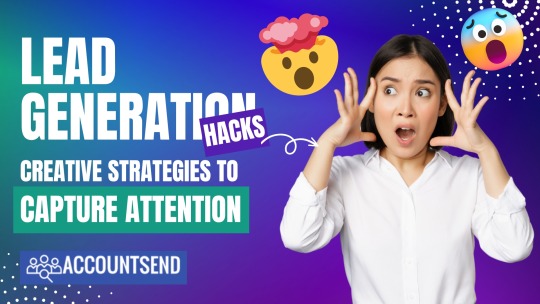
In the crowded B2B landscape, creativity is the key to standing out and capturing the attention of potential leads. Here are seven innovative strategies that will help you supercharge your lead generation efforts and make your mark in the industry.
DOWNLOAD THE LEAD GENERATION HACKS INFOGRAPHIC HERE
Leverage Social Media Contests Social media contests are a unique way to capture attention and engage potential leads. They encourage interaction and sharing, effectively amplifying your reach. Make sure that the contest aligns with your brand and offers a valuable reward to attract the right audience.
Explore Unconventional Networking Opportunities Don’t limit yourself to traditional networking events! Seek out opportunities in niche industries or emerging markets or sponsor relevant community events. Even activities like podcast guesting can help you reach new audiences and generate leads.
Create Valuable, Shareable Content Useful shareable content can extend your reach and draw in potential leads. Infographics, eBooks, and educational videos are just a few examples of valuable content that will appeal to your target audience while aligning with your brand’s expertise.
Utilize Interactive Tools Interactive tools such as quizzes, calculators, or interactive infographics can engage potential leads while providing them with personalized insights. These tools are not only engaging but can also help you gather valuable data about your leads.
youtube
Host Webinars or Virtual Events Webinars or virtual events give you an opportunity to demonstrate your expertise while engaging with potential leads in real-time. You can address industry trends, offer actionable tips or discuss common challenges while following up with attendees for potential sales opportunities.
Collaborate with Complementary Businesses Collaboration can help you tap into new audiences! Find businesses that offer complementary services and propose collaborative projects such as co-hosted webinars, joint promotions or bundled services.
Use Gamification in Your Marketing Strategy Gamification can make your marketing efforts more engaging! This could involve a points-based system for interactions, achievement badges for milestones or even a leaderboard! This approach can increase engagement while fostering a deeper connection with your audience!
In conclusion, creativity is essential for giving your lead generation efforts a competitive edge! These strategies are not only engaging but also provide value to potential leads while helping you stand out in the busy B2B marketplace!
#AccountSend#B2BLeadGeneration#B2BLeads#B2BSales#B2BDatabase#LeadGeneration#ContactDatabase#BusinessLeads#B2BProspects#SalesLeads#SalesProspecting#Youtube
19 notes
·
View notes
Text
AI is Shaping the Future of Educational Apps
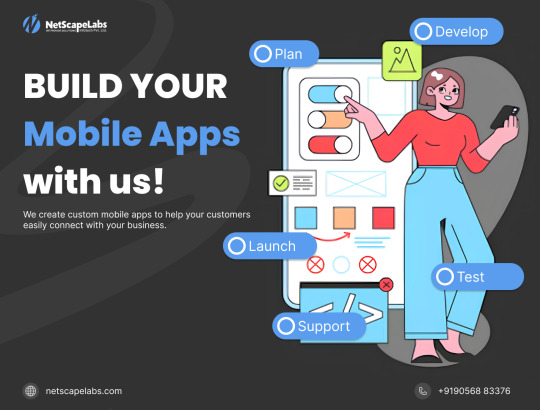
Artificial Intelligence is transforming education, making it more personalized, efficient, and engaging. Here’s why this is so important:
Tailored Learning Experiences: AI adapts educational content to meet each student’s unique needs, enhancing their learning journey and boosting outcomes.
24/7 Support: AI-driven virtual tutors offer around-the-clock assistance, helping students overcome challenges and stay motivated.
Data-Driven Decisions: Educators can use AI insights to refine teaching strategies and address learning gaps more effectively.
Administrative Relief: Automating tasks like grading and scheduling frees up valuable time for educators to focus on interactive teaching.
Engaging Interactions: AI powers immersive experiences through gamification and simulations, making learning both enjoyable and impactful.
The integration of AI in Educational Apps is not just a trend — it’s a crucial advancement that addresses the diverse needs of learners and educators alike. By embracing these innovations, we can make education more Accessible, engaging, and effective.
Building Your Own Business App If you’re looking to develop your own business app, partnering with a leading app development company in India is a smart choice. In particular, app development company in mohali and Chandigarh offer a talented pool of professionals skilled in creating custom, high-quality apps tailored to your business needs. By leveraging their expertise, you can elevate your business with a bespoke app. A Mohali-based development company can provide the local knowledge and personalised attention needed to turn your vision into reality. NetscapeLabs Infotech Pvt. Ltd. is an excellent option for anyone seeking top-tier app development services.
2 notes
·
View notes
Text
Top Trends Shaping Classrooms Latest trends in educational technology for personalized learning
latest trends in educational technology for personalized learning is remodeling the panorama of getting to know, shaping how college students and educators engage with content material, and altering the very nature of the instructional enjoy. As we circulate in addition into the twenty first century, numerous tendencies are rising that promise to decorate academic results, customise getting to know, and put together students for a hastily evolving world. This article delves into the current developments in academic technology, examining their implications and potential effect on the future of training.
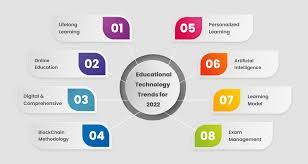
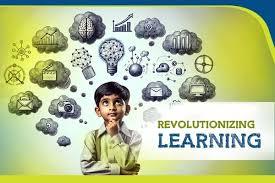
Artificial Intelligence (AI) and Machine Learning
Impact of artificial intelligence on classroom learning experiences and machine gaining knowledge of are revolutionizing schooling by way of enabling more customized and adaptive studying reports. AI-powered systems can analyze pupil performance records to tailor educational content to man or woman wishes. For example, AI can perceive a student’s strengths and weaknesses, supplying customized sporting events and resources to address particular gaps in expertise.
Key Applications
Adaptive Learning Systems
Platforms like DreamBox and Knewton adjust the problem and kind of content based on real-time evaluation of scholar interactions.
Automated Grading
AI can grade assignments and provide instantaneous comments, reducing the administrative burden on educators and letting them recognition greater on interactive coaching.
Virtual Reality (VR) and Augmented Reality (AR)
Virtual Reality (VR) and Augmented Reality (AR) are developing immersive gaining knowledge of environments that could decorate engagement and information. These technologies offer college students the opportunity to discover and engage with content in approaches that conventional strategies can not.
Key Applications
Virtual Field Trips
VR allows college students to go to historic websites, outer space, or maybe microscopic environments with out leaving the classroom. For instance, Google Expeditions gives virtual area trips to numerous global landmarks.
Interactive Simulations
: AR packages like JigSpace permit students to visualise complex ideas, such as the workings of the human frame or mechanical structures, via interactive 3-D fashions.
Gamification
Gamification incorporates recreation design elements into instructional settings to make gaining knowledge of extra enticing and motivating. By integrating factors, badges, leaderboards, and other recreation-like functions, educators can beautify scholar motivation and participation.
Educational Games
Platforms like Kahoot! And Quizizz use game mechanics to make quizzes and evaluation periods extra interactive and competitive.
Game-Based Learning Environments
Tools like Classcraft include function-gambling sport elements to encourage nice behavior and collaboration among students.
Learning Analytics
Learning analytics involves the collection and evaluation of data related to pupil getting to know methods and results. By leveraging data, educators can benefit insights into student overall performance and make knowledgeable selections to enhance teaching strategies and gaining knowledge of environments.
Performance Tracking
Learning management systems (LMS) like Canvas and Blackboard offer analytics dashboards that assist educators monitor student progress and identify trends.
Predictive Analytics
Tools such as Brightspace’s Insights use ancient statistics to expect student performance and perceive those at risk of falling at the back of.
Cloud-Based Learning Platforms
Cloud-primarily based mastering systems provide flexible and scalable answers for handing over educational content material and dealing with classroom sports. These systems facilitate collaboration, useful resource sharing, and get right of entry to to instructional materials from anywhere with a web connection.
Collaborative Tools
Google Classroom and Microsoft Teams for Education provide gear for document sharing, institution work, and communication amongst college students and teachers.
Resource Access: Platforms like Edmodo and Schoology enable college students to access route materials, submit assignments, and interact with friends and instructors on-line.
EdTech for Special Education
Technology is more and more getting used to support students with unique wishes, imparting gear and assets tailored to numerous mastering requirements. Assistive technologies and adaptive mastering equipment are assisting to create more inclusive academic environments.
Text-to-Speech and Speech-to-Text Tools
Tools like Kurzweil 3000 and Dragon NaturallySpeaking assist college students with analyzing and writing problems.
Customized Learning Environments:
Software like ModMath helps college students with dysgraphia by using providing a digital platform for fixing math troubles.
Blockchain for Education
Blockchain generation, recognised more often than not for its use in cryptocurrencies, is beginning to make an impact in education through its ability to securely and transparently manage instructional facts and credentials.
Digital Diplomas and Certificates
Platforms like Learning Machine and the MIT Media Lab are using blockchain to issue and verify virtual diplomas and certificates, lowering fraud and simplifying the credential verification method.
Decentralized Learning Records
: Blockchain can create steady, immutable statistics of scholar achievements and gaining knowledge of pathways, supplying a complete and verifiable educational history.
Personalized Learning
Personalized learning leverages technology to tailor academic stories to the specific needs and options of every student. This technique aims to enhance learning by using accommodating person getting to know styles, paces, and hobbies.
Customized Learning Paths
Platforms like Khan Academy and Coursera provide publications that adapt to the learner’s pace and provide recommendations based totally on progress and hobbies.
Learning Profiles
Tools inclusive of SMART Learning Suite allow teachers to create and track personalized getting to know profiles for every student, facilitating targeted coaching and comments.
Internet of Things (IoT) in Education
The Internet of Things (IoT) connects various devices and sensors to the net, enabling clever lecture rooms wherein bodily items can have interaction with digital structures. This technology has the ability to enhance each coaching and mastering stories.
Smart Classrooms
IoT gadgets like clever whiteboards and related sensors can music classroom situations, along with temperature and lights, and modify them to optimize gaining knowledge of environments.
Interactive Learning Tools
IoT-enabled devices, including linked robots and programmable sensors, offer hands-on learning reviews in subjects like robotics and science.
Mobile Learning
Mobile getting to know, or m-studying, utilizes cellular devices like smartphones and capsules to facilitate getting to know out of doors traditional classroom settings. This fashion helps anytime, everywhere access to educational assets.
Educational Apps
Apps such as Duolingo for language getting to know and Photomath for solving math troubles offer on-the-go gaining knowledge of possibilities.
Flexible Learning Resources
Mobile structures allow students to get right of entry to path materials, participate in discussions, and entire assignments from their devices.
#latest trends in educational technology for personalized learning#Impact of artificial intelligence on classroom learning experiences
2 notes
·
View notes
Text
Elevate Your Math Skills with Educational Game Platforms! 🚀📐
Hey math whizzes and problem-solving enthusiasts! 🌟 Ready to infuse some excitement into your learning journey? Let's talk about the power-packed world of educational game platforms, where numbers, equations, and fun collide!
Whether you're a Kahoot connoisseur, a Hot Potato aficionado, a Quizizz champion, a Google Forms enthusiast, or an Educaplay explorer, these platforms are here to transform the way you approach math.
Imagine immersing yourself in the world of fractions through a Kahoot quiz, racing against the clock to solve equations and claim the top spot. Or how about passing the "hot potato" of mathematical challenges in a game of Hot Potato, where quick thinking and strategy are key?
Quizizz takes the traditional quiz format and infuses it with a dose of competitiveness, as you compete with friends or classmates to see who excels in math mastery. And let's not forget Google Forms, the versatile tool that allows educators to create customized math exercises and surveys to gauge understanding and tailor learning experiences.
Last but not least, Educaplay opens the door to a world of interactive learning, offering a variety of math games, puzzles, and activities designed to engage and inspire learners of all levels.
What distinguishes these platforms is their ingenious blend of education and entertainment. By incorporating elements of gamification, they transform mundane math concepts into thrilling challenges, sparking curiosity and fostering a love for learning.
So whether you're brushing up on your multiplication tables, mastering geometry, or tackling calculus head-on, these educational game platforms are your ultimate allies in the pursuit of math greatness.
Ready to level up your math skills and embark on an adventure like never before? Delve into the world of Kahoot, Hot Potato, Quizizz, Google Forms, and Educaplay, and let the math games begin! 🎲✨
2 notes
·
View notes
Text
Online Gaming: Exploring the Digital Playground

Online gaming has transformed the way millions of people around the world connect, compete, and unwind. What once was a niche hobby has become a global phenomenon that blends entertainment, social interaction, creativity, and even career opportunities. Whether you’re a casual player or a competitive pro, online gaming offers something for everyone.
In this post, we’ll dive into why online gaming matters, how it’s shaping culture, and what you should know to enjoy it responsibly.
The Rise of Online Gaming
The internet changed everything. Suddenly, players weren’t limited to gaming alone in their living rooms—they could team up or compete against people anywhere on the planet. Titles like World of Warcraft, Fortnite, and Call of Duty created massive online communities where gamers shared experiences, strategies, and friendships.
What’s amazing is how diverse this world has become. Online games range from fast-paced shooters and strategy games to social simulators and creative sandboxes. This diversity means players of all ages and interests can find a game that suits them.
More Than Just Play: Building Connections
One of the biggest draws of online gaming is the social aspect. In-game chat, voice communication, and forums allow players to collaborate, compete, and socialize. For many, these virtual spaces become places to make lasting friendships.
During challenging missions or competitive matches, players learn teamwork, communication, and trust. These skills often carry over beyond gaming, helping in real-world relationships and workplaces.
Interestingly, online gaming communities have also become places where people share advice, support, and humor—forming bonds that can feel as meaningful as those offline.
Learning and Growing Through Gaming
Online games aren’t just fun; they’re educational in unexpected ways. Many games require critical thinking, problem-solving, and quick reflexes. Strategy games teach planning and resource management, while multiplayer team games demand effective communication and cooperation.
For younger players, certain educational games use gamification techniques to make learning subjects like math, science, or history engaging and interactive.
Beyond that, the rise of esports and streaming platforms has opened new career paths. Players can become professional competitors, coaches, content creators, or developers. This new digital economy offers exciting opportunities for those passionate about gaming.
The Challenges of Online Gaming
Despite all its benefits, online gaming isn’t without challenges. Toxic behavior, such as harassment and bullying, remains a serious concern in many communities. Developers and platforms are constantly working on tools to moderate chats, report misconduct, and foster safer environments.
Another issue is gaming addiction. Like any hobby, moderation is key. Setting time limits and balancing gaming with other activities is essential for mental and physical health.
Privacy and data security also deserve attention, especially for younger players. Parents and gamers alike should be mindful of sharing personal information and be aware of online safety practices.
How to Get Started or Level Up
If you’re new to online gaming, it’s never too late to jump in. Start by choosing a game that matches your interests—whether that’s a fast shooter, a casual puzzle game, or a social simulation.
Most games offer tutorials and beginner-friendly modes, so don’t worry about being an expert right away. Joining online forums, watching gameplay videos, or playing with friends can make the experience more enjoyable and less intimidating.
For seasoned players, consider exploring new genres or getting involved in community events and tournaments. Streaming your gameplay or creating content can be rewarding Luxury138 ways to share your passion and connect with others.
Final Thoughts: A World of Opportunity
Online gaming is more than just a pastime—it’s a dynamic, evolving culture that connects millions globally. It offers entertainment, friendships, learning, and even career paths. But like anything powerful, it’s best enjoyed with awareness and balance.
Whether you play for fun, competition, or creativity, online gaming opens doors to new worlds and communities. So pick up your controller, keyboard, or mobile device and dive into the digital playground. Adventure awaits!
0 notes
Text
#elearning#eLearning Gamification#business strategy#business#education#management#custom elearning development
0 notes
Text
The Ultimate Guide to Token Marketing: Strategies, Tools & Services
As the crypto market becomes increasingly saturated with new projects and tokens, launching a token successfully now demands more than just good tech. Without strategic token marketing, even the most innovative projects can struggle to gain visibility, attract investors, and build a sustainable community.
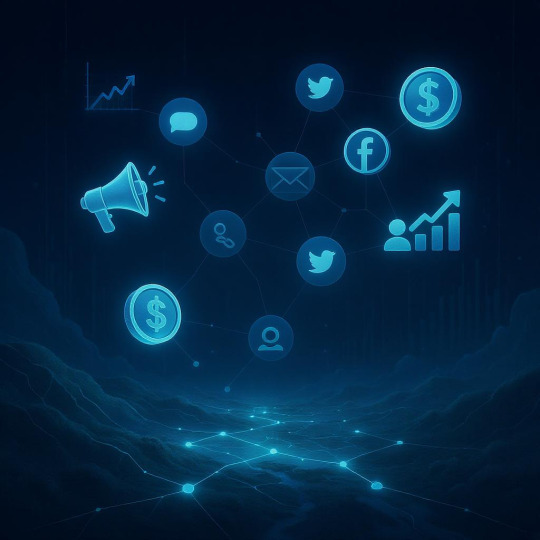
Welcome to your comprehensive guide on token marketing — a deep dive into the strategies, tools, and services you need to thrive in 2025’s highly competitive crypto space.
Why Token Marketing Is Crucial for Your Crypto Project
Launching a token without marketing is like launching a product in the dark. Crypto is a fast-moving, hype-driven ecosystem where visibility, trust, and community can make or break your project.
Key reasons why token marketing is essential:
Builds Awareness: Introduces your project to the crypto world.
Establishes Trust: Transparency and regular updates build investor confidence.
Drives Utility and Adoption: More users = higher demand and utility.
Attracts Investors and Exchanges: A well-marketed token looks promising to VCs and CEXs.
Fuels Community Growth: Loyal followers help promote organically.
Top Token Marketing Strategies That Work in 2025
Marketing in crypto isn’t about spamming Telegram groups anymore. Modern token marketing uses a blend of Web2 and Web3 strategies to create sustainable growth. Let’s explore the most effective ones:
1. Community-Centric Growth (Discord, Telegram, X)
Crypto success starts and ends with the community. Engage your audience directly through:
Discord & Telegram: Host AMAs, quizzes, airdrops.
X (Twitter): Share progress updates, memes, threads.
Gamification: Leaderboards, referral systems, XP rewards.
Tip: Use bots for moderation but not automation overload — authenticity matters.
2. Influencer & KOL Collaborations
Key Opinion Leaders (KOLs) still hold sway, especially in DeFi, NFTs, and memecoins. Look for:
Niche relevance: Choose influencers who align with your vertical.
Engagement metrics: Don’t be fooled by followers — check comments and shares.
Video reviews and spaces: Livestreamed content builds real-time engagement.
3. Content Marketing & SEO
Long-term visibility comes from quality content:
Medium Blogs: For technical and product updates.
SEO Optimization: Rank for searches like “best utility tokens 2025.”
Educational Series: Break down tokenomics, staking, use cases.
4. Press Release Distribution
Get featured on major crypto media like:
CoinTelegraph
Decrypt
NewsBTC
Bitcoin.com A strategic PR campaign can give your token a credible push, especially before IDO or listing events.
5. Airdrops, Bounty Campaigns & Whitelisting
Incentivize early engagement by giving away tokens:
Airdrops: For wallet holders, followers, or community tasks.
Bounty Programs: Reward testers, translators, and promoters.
Whitelisting: Hype your IDO or ICO through exclusive access.
6. Paid Ads & Retargeting
Even in crypto, paid ads can work — if done right:
Reddit & X Ads: Reach crypto subreddits and niche communities.
Google Ads (cautiously): Works for educational content or news.
Retargeting Tools: Bring back past visitors through cookies.
7. Token Listing Campaigns
Work on getting listed on:
DEXs: Like Uniswap, PancakeSwap.
Tier 1 CEXs: Binance, Coinbase, OKX.
Listing often requires marketing collateral like pitch decks, social proof, and user demand — all part of your marketing strategy.
8. Token Utility & Real Use Cases
Your marketing must showcase utility. Why should anyone buy or hold your token?
Staking Rewards
Governance Voting
Access to Services or Products
Revenue Sharing or Burn Mechanisms
Marketing the use case is just as important as the technology behind it.
Best Token Marketing Tools in 2025
You’ll need the right stack to execute your strategy efficiently. Here’s a list of essential tools:
🛠️ Community Engagement Tools
Discord Bots: MEE6, Carl-bot for XP, rank, auto-moderation.
Telegram Bots: Combot for analytics, Shieldy for spam protection.
📈 Analytics & Tracking
Dune Analytics: Create dashboards for token metrics.
Nansen.ai: Track smart money inflows into your token.
Google Analytics & Hotjar: Understand website behavior.
💬 Social Scheduling Tools
TweetDeck/X Pro
Hootsuite
Buffer
Schedule content, track engagement, and manage multiple platforms.
📣 Press Distribution Services
Chainwire
GlobeNewswire Crypto
MarketAcross
These services ensure your announcements hit top media outlets.
✍️ Content & Design Tools
Canva or Figma: Create infographics and explainer images.
ChatGPT or Jasper: Assist with content ideas, captions, or scripts.
Grammarly: Polish your blog and social content.
Should You Hire a Token Marketing Agency?
While DIY marketing is possible, agencies offer specialized experience and established media relationships. Here’s what they bring to the table:
✅ Benefits of Hiring an Agency:
End-to-end campaign execution
Pre-built influencer and media networks
Expertise in IDO/ICO timelines
Analytics, strategy, and PR handled in-house
🔍 How to Choose the Right Agency
Ask the right questions:
What tokens have you marketed in the past?
Do you specialize in my niche (e.g., DeFi, GameFi)?
Can you provide KPIs from past campaigns?
What’s your pricing and ROI expectation?
Look for case studies, transparency, and milestone-driven contracts.
Common Token Marketing Mistakes to Avoid
To save your time, money, and credibility, watch out for these:
Overhyping before launch: Underdeliver and you lose trust.
Ignoring regulations: SEC and other regulators are watching.
Fake followers and bots: Short-term gain, long-term pain.
Poor whitepaper and tokenomics: These are your first impressions.
Inconsistent updates: Goes against the decentralized, transparent ethos.
Measuring the Success of Token Marketing
Every campaign must have measurable KPIs. Key ones to track:
Community Growth: X followers, Discord/Telegram members.
Engagement Rate: Likes, comments, participation in AMAs.
Website Metrics: Time spent, pages viewed, bounce rate.
Token Performance: Trading volume, number of holders, liquidity pool activity.
Conversion Rate: From campaigns to actions (signups, whitelists, purchases).
Use tools like Dune, Google Analytics, and Nansen to monitor and refine.
Final Thoughts
Token marketing in 2025 isn’t just about pumping price — it’s about building sustainable, trust-based ecosystems. With regulatory scrutiny rising and investor expectations maturing, your marketing must be both strategic and ethical.
Whether you're gearing up for a token launch or rebranding for growth, a strong marketing foundation will amplify your efforts. Combine community-first values with data-driven execution — and you’ll be well on your way to standing out in the crypto crowd.
0 notes
Text
Top 7 Features Every Modern Dating App Must Have

In today's rapid digital world, building a dating app is not enough. Users interest more than just swipes: they want authenticity, intelligent matchmaking, and safe conversation. Whether you're developing on a custom dating app development project or a Tinder clone app, integrating the best features will set your platform apart.
The list below represents the seven must-have features for any modern dating app to attract, engage, and retain users.
Profile Verification and Security
Nothing erodes trust faster than fake profiles and scammers. To build a secure dating app, you need advanced verification and data protection.
How to implement this:
Use AI-powered facial recognition to verify profile photos.
Enable two-factor authentication during registration.
Provide visible verification badges.
Allow users to report or block suspicious accounts easily.
By investing in secure dating app development, you strengthen trust, reduce fraud, and protect your community.
AI Matchmaking Algorithms
Forget basic filters—today’s singles expect intelligent recommendations powered by machine learning matchmaking.
How it works:
Advanced algorithms evaluate user preferences, activities, and interactions in real time.
AI dynamically adjusts compatibility scoring to improve relevance.
Each swipe, like, or message informs future matches.
Prioritizing AI dating app development ensures your platform stands out with smarter, more meaningful connections.
Advanced Filters and Discovery Preferences
Modern users don’t want to swipe endlessly. They expect dating app customization features that give them control over discovery.
Key filters to include:
Location radius
Interests and lifestyle preferences
Education and occupation filters
Relationship goals
Activity status toggles
When you allow users to fine-tune their searches, you make your dating app development services feel personalized and thoughtful.
In-App Video and Voice Calling
Safety is a top priority, especially when interacting in person. Integrating video chat in dating apps is now an industry standard.
Implementation Tips:
Use WebRTC or Twilio to enable reliable video and voice calls.
Offer blurred video options for privacy-conscious users.
Include call time limits for free members, unlocking unlimited calling with subscriptions.
Custom dating app development with built-in video chat creates a more secure, engaging environment that users trust.
Gamification and Engagement Tools
Dating apps aren’t just about matching—they’re about experiences. Adding gamification in dating apps keeps users engaged long term.
Examples:
Daily swipe limits and streak rewards
Compatibility quizzes and icebreaker games
Leaderboards for most-liked profiles
Virtual gifts, badges, and seasonal challenges
Gamification, when paired with user engagement strategies, leads to higher retention, viral growth, and increased monetization.
Privacy Controls and Data Protection
With growing concerns about data breaches, privacy-focused dating app development has become essential.
What to include:
Transparent privacy policies and consent screens
End-to-end encryption of messages and images
Anonymous browsing modes and hidden profile settings
Compliance with GDPR, CCPA, and local regulations
Strong privacy practices not only protect users but also enhance brand credibility and trust.
Monetization Features
A sustainable dating app needs reliable revenue streams. The most successful platforms integrate dating app monetization strategies right from launch.
Effective models to consider:
Free subscriptions such as Tinder Plus or Bumble Boost
Pay-per-boost visibility and premium filters
In-app purchases of virtual coins or gifts
Properly targeted advertisements Thoughtful monetization guarantees that your dating app development generates a significant ROI while keeping customers delighted.
Tech Stack Considerations
When planning these features, your dating app tech stack matters as much as your UX.
Top technologies include:
React Native or Flutter for cross-platform development
Python and TensorFlow for AI matchmaking and personalization
Node.js for backend API performance
AWS or Azure for scalable hosting
Twilio and WebRTC for real-time video and voice
Choosing the right stack ensures your dating app is fast, secure, and scalable from day one.
Conclusion: Build Dating Apps People Love
These seven features are no longer optional—they’re what users expect from any dating app in 2025. Whether you’re launching a Tinder clone app, creating a niche matchmaking platform, or exploring new models of connection, integrating these capabilities is essential.
Ready to build your own dating app? Work with Comfygen Technologies ' experienced team specializing in AI dating app development, secure dating app design, and innovative monetization solutions.
👉 Contact us today for a free consultation and custom project estimate.
0 notes
Text
0 notes
Text
0 notes
Text
Instructional design services
Many companies face the issue of their training programs not achieving the expected results. Standard online education often ignores the specifics of the business, is not adapted to modern learning methods, and, as a result, fails to engage employees. Team members do not memorize important information, and the company wastes resources on ineffective learning.
Outdated or overly general training materials can have a negative impact on team productivity. Employees lose motivation due to boring lectures, long text modules without interactive elements, and a lack of real-world practice. In the face of rapid change and technological progress, traditional learning methods no longer work – instructional design services and innovative approaches are required.
Instructional design from Sigma Software University is a service that offers a fully personalized approach to creating educational content that really works. We not only tailor the content to your business needs, but we also make it relevant, interesting, accessible, and effective.
What do we offer?
Customized training content development
Courses and training materials will be fully adapted to your team’s business goals, needs, and specifics.
Implementation of advanced teaching methods
We use proven pedagogical approaches, including microlearning and assessment strategies, to help you learn better.
Interactivity and engagement
Videos, interactive tests, case studies, microlearning, visuals, and gamification make the learning process engaging and effective. That’s why we use all these approaches to achieve the best results!
Ready to make your training programs more effective? Contact us, your trusted partner, and we’ll help you create training materials that work for your business!
0 notes